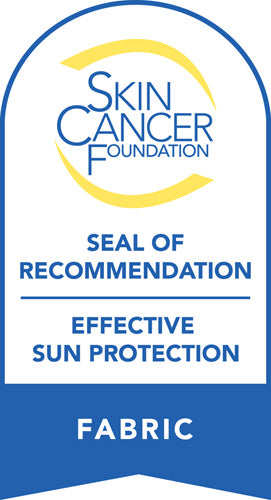Did you know that nearly 10,000 people get diagnosed with skin cancer each day? So, it shouldn't come as a surprise to learn that skin cancer is the most common form of cancer in the United States.
It's essential to protect our skin from the harmful UV rays emitted by the sun. However, some sunscreens may do more harm than good.
Let's explore whether or not wearing sunscreen can cause harm over time.
How Does the Sun Cause Skin Cancer?
The sun emits ultraviolet (UV) radiation, which consists of two types: UVA and UVB rays.
UVA rays are longer in wavelength and can penetrate deep into the skin, causing damage to the collagen fibers and DNA. These types of rays have been linked to premature aging, wrinkles, and even skin cancer.
UVB rays are shorter in wavelength and only penetrate the outer layer of skin, known as the epidermis. These rays are the primary cause of sunburns.
While both types of UV radiation can be harmful to our skin, UVB rays are more dangerous when it comes to causing cancer. This is an important distinction to keep in mind.
How Does Sunscreen Work?
Sunscreen works by absorbing, reflecting, or scattering the sun's rays away from our skin.
There are two types of sunscreen: chemical and physical.
Chemical sunscreens work by using active ingredients that absorb the UV rays and convert them into heat, which is then released from the skin. Some common active ingredients found in chemical sunscreens include avobenzone, oxybenzone, octinoxate, and octisalate.
Physical sunscreens work by using inactive ingredients that sit on top of the skin and reflect or scatter the UV rays away. Some common physical sunscreen ingredients include zinc oxide and titanium dioxide.
What Are the Dangers of Sunscreen Ingredients?
There has been much debate over the years about the safety of sunscreen ingredients, specifically chemical sunscreens.
One of the most common active ingredients in chemical sunscreens, oxybenzone, has been shown to be a hormone disruptor.
This means that it can mimic or interfere with the body's natural hormones, which can lead to a variety of health problems.
Oxybenzone has also been shown to be a skin irritant and can cause allergic reactions. In fact, the American Academy of Dermatology (AAD) recommends that people with sensitive skin or allergies avoid sunscreens that contain oxybenzone.
Another common sunscreen ingredient, avobenzone, breaks down quickly when exposed to sunlight and can become ineffective. In addition, avobenzone has also been shown to be a skin irritant.
Are There Safe Sunscreens on the Market?
If you're looking for a safe sunscreen, the AAD recommends choosing one that contains zinc oxide or titanium dioxide as the active ingredient.
You should also look for sunscreens that are labeled "broad-spectrum," which means they protect against both UVA and UVB rays. You should always choose a sunscreen with an SPF of 30 or higher.
When it comes to applying sunscreen, be sure to use enough to cover all exposed skin. Don't forget to reapply every two hours, or more often if you're sweating or swimming.
However, sunscreen is not the ideal form of UV protection.
What Is a Reliable Alternative to Sunscreen?
If you're looking for a safe and effective alternative for protecting your skin, consider using a physical sunblock like zinc oxide. Physical sunblocks work by sitting on top of the skin and reflecting the sun's rays away. Zinc oxide is a great alternative to sunscreen because it provides broad-spectrum protection against both UVA and UVB rays.
It's worth noting that UV clothing is the best form of sun protection. Clothing that covers the arms and legs, as well as a wide-brimmed hat, can provide excellent protection from the sun.
How Does UV Clothing Work?
This type of clothing is made from materials that have been specifically designed to block out the sun's harmful UV rays. The clothing is usually treated with a UV-resistant finish or has built-in SPF protection.
This means that the clothing will absorb, reflect, or scatter the UV rays away from your skin. Since the protection is built into the fabric, it won't wash off like sunscreen can.
When shopping for UV clothing, look for items that are labeled "UPF 50+." This means that the clothing has been tested and proven to block out at least 98% of the sun's UV rays.
What Are Some Other Ways to Protect Yourself From the Sun?
In addition to using sunscreen and wearing UV clothing, there are a few other things you can do to protect yourself from the sun:
- Seek shade when possible, especially during the midday hours when the sun's rays are the strongest
- Wear a wide-brimmed hat to protect your face, head, ears, and neck
- Wear sunglasses that block out 99% or more of UV rays
- Avoid tanning beds and sunlamps, which emit harmful UV rays
These can go a long way when it comes to keeping your skin as safe as possible from UV rays.
Wearing Sunscreen Isn't Always Ideal
By taking these simple steps, you can help protect yourself from the harmful effects of the sun. Keep in mind that wearing sunscreen isn't always necessary or ideal. In some cases, it can actually do more harm than good.
Just be sure to keep in mind the utility that UV clothing has.
Want to learn more about what we can do? Be sure to reach out to us today and see how we can help you.



